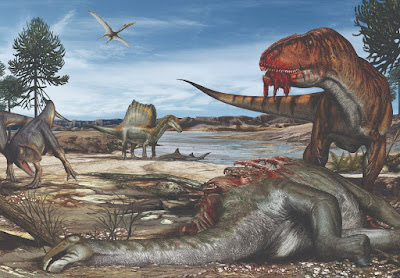Geostatistical models were produced for eight out of 10 species detected, of which five species were associated with lower stream orders and only one species with higher stream orders. Six species showed negative responses to one or both crayfish species, even after accounting for environmental effects and spatial dependencies. Most amphibian species were found to retain large expanses of potential habitat in stream headwaters, but current refuges will likely contract under plausible scenarios of crayfish expansion. Leer más.





The geological and paleoenvironmental setting and the vertebrate taxonomy of the fossiliferous, Cenomanian-age deltaic sediments in eastern Morocco, generally referred to as the «Kem Kem beds», are reviewed. These strata are recognized here as the Kem Kem Group, which is composed of the lower Gara Sbaa and upper Douira formations. Both formations have yielded a similar fossil vertebrate assemblage of predominantly isolated elements pertaining to cartilaginous and bony fishes, turtles, crocodyliforms, pterosaurs, and dinosaurs, as well as invertebrate, plant, and trace fossils. Leer más.

A propagación de varias enfermidades, denominadas enfermidades infecciosas emerxentes (EIE en diante), destacadamente o fungo quitridio (Batrachochytrium dendrobatidis) e os iridovirus (Ranavirus sp), ten levado á extinción repentina a numerosas poboacións de anfibios, mesmo en lugares illados e ben preservados. Leer más.
El David Perpiñan, membre de la Junta Directiva de la Societat Catalana d’Herpetologia i veterinari, ha realitzat aquest segon curs sobre patologia d’amfibis, una continuació del primer d’anatomia que trobareu al nostre canal. Ir al enlace.
Frogs were far more likely to be reported in studies that sampled cat stomachs than cat scats. The mean frequency of occurrence of frogs in cat stomachs was 1.5%. The estimated annual per capita consumption by feral cats in Australia’s natural environments is 44 frogs, and, hence, the annual total take is estimated at 92 million frogs. Leer más.






